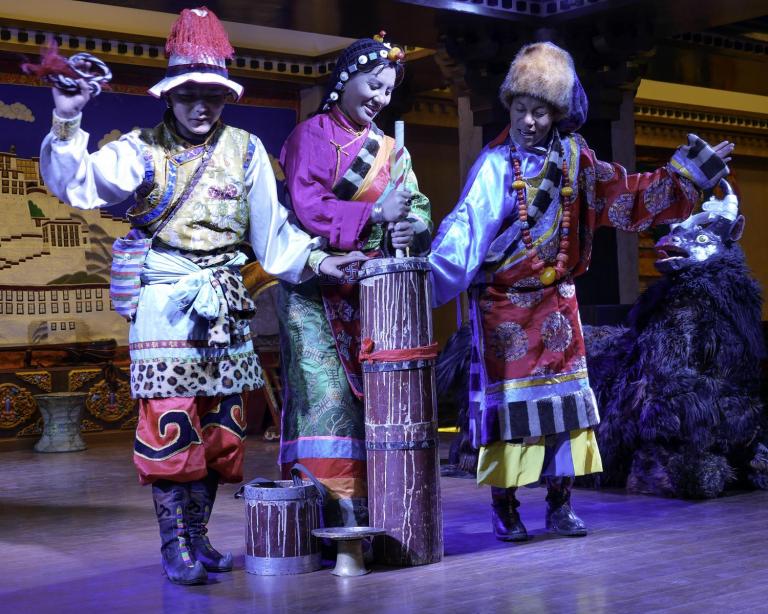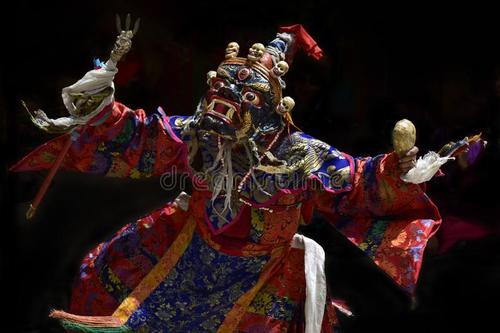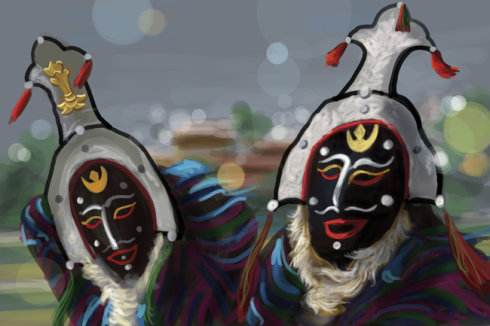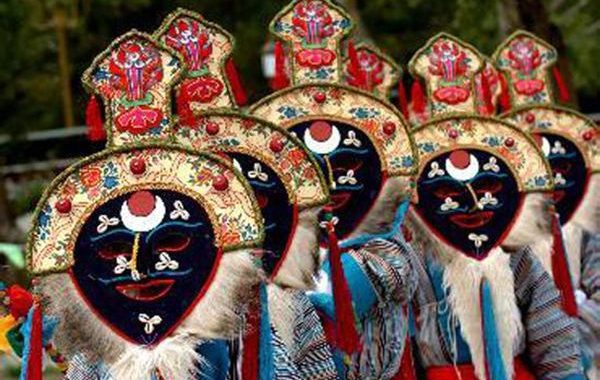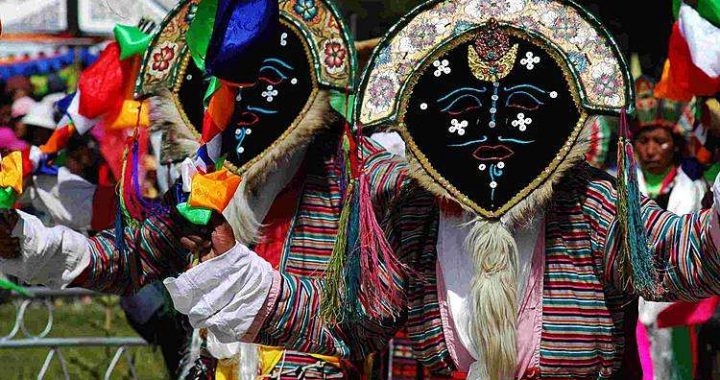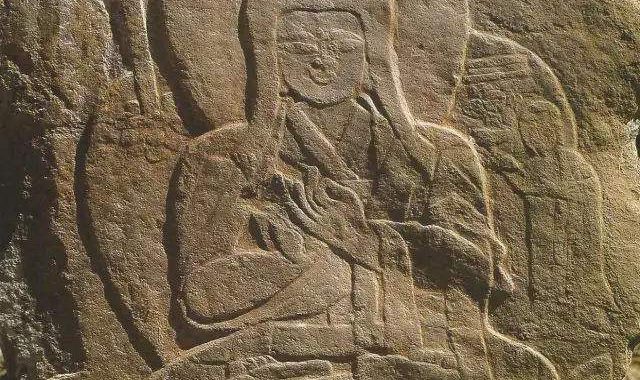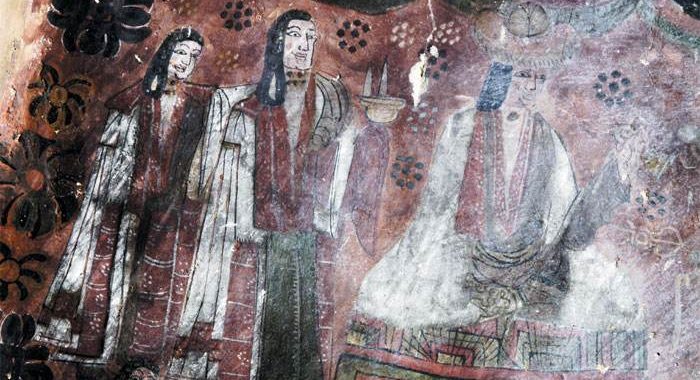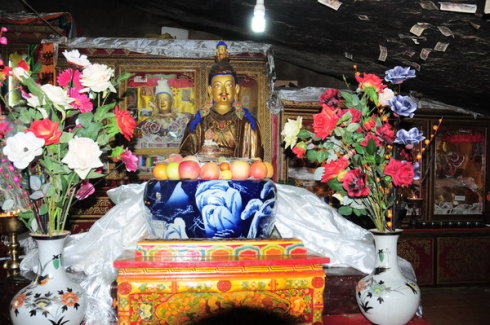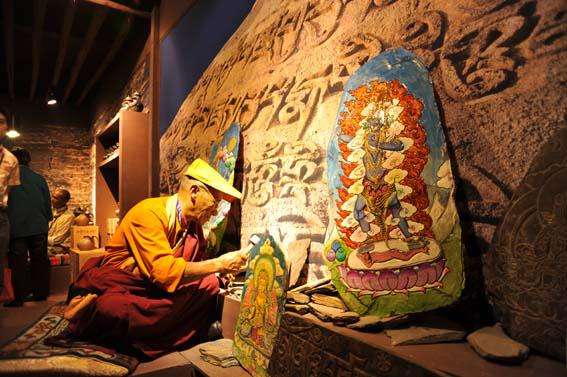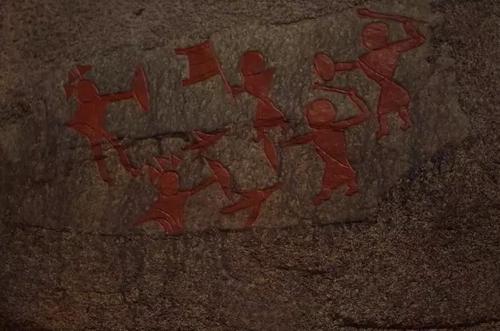Costumes and Wealth display
4 min readNowadays, there are always fine costume displays on view at all the major traditional and cultural festivals in Tibet and other Tibetan-inhabited regions There are two reasons for this, for one thing, costume represents beauty: fo another costume is an obvious symbol of wealth in those places. In the vast pastoral areas, the traditional consumption pattern for generations has been to change wealth into jewelry for decoration. The price of some shepherds costumes can be as high as several million Yuan, because a single nine-eyes stonecosts a few hundred thousand Yuan. The original Tibetan meaning for costume display”‘ is displaying one’s wealth. Under the bright sunlight in the lateau and the pure blue sky, words simply cannot describe the brilliant colors and the expensive beadwork in the costume.
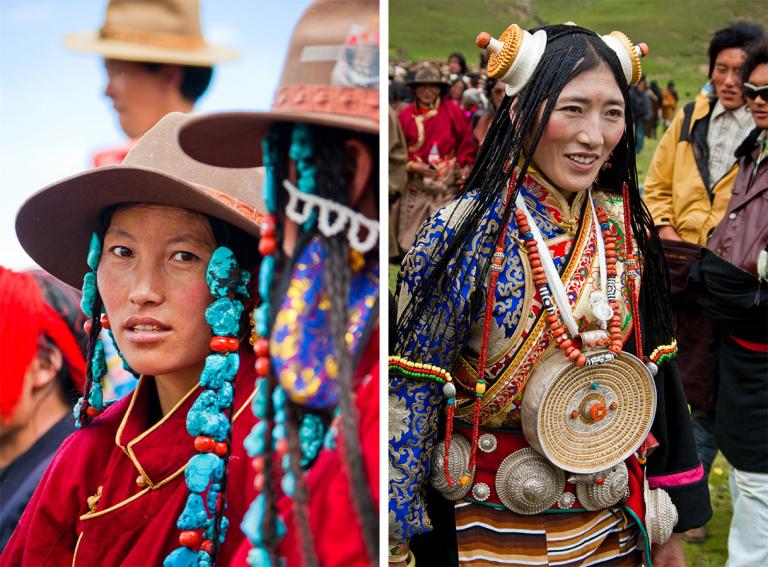
The basic characteristics of Tibetan costumes include a fat waist part, long sleeves, large front opening, hidden right lappet, long dress, long boots, braidedhair and gold and silver jewelry. As the people have lived in isolated environment for a long time, there is no major longitudinal change in the development of Tibetan costume and its basic elements. However, significant transverse changes have appeared in the costume details. To a large extent, the pattern and texture of their costumes depend on the ecological environment in which local people live and the production methods and lifestyles formed on that basis.
This was the traditional costume for a Tibetan woman, the underclothes are a smooth and soft, deep black dress with the outside covered by a dark blue robe with flower of peacock feather brocaded in the blue wave-like folds. She wears a pair of boots of foral patterned brocade, a jeweled waist belt with tassels and a golden bracelet and conch bracelet around her wrists. She wears jeweled rings on her middle and ring fingers, a necklace with red amber pendant around her neck, a short necklace of obvious structure with coral, jade and amber and a g necklace made of jade on her bosom. Her hair is combed evenly into two parts. The bun on the top of her head is tied with a pearl, with small braids fullydecorated by gold, silver, jade, coral and gemstones falling down her back. This is enhanced by triangular beaded headwear with a huge turquoise on the top of the bun. All the jewelry on her head is splendid and dazzling. This was the costume for an aristocratic woman in ancient times. However, it can only be found in costume exhibitions nowadays.
Costume for a man, he wears a piece of clothing that Is made of colore embroidered brocade with broad collar and without vent and a fur lining. He also wears a marten cape, an unlined long gown, a golden silk waist belt with ornaments like knife and a pocket, and a pair of cow leather boots. He wears his hair long, has an earring inlaid with turquoise in his left ear, a coral earring in his right ear topped by a fox fur hat. He wears a bone ring and holds a string of prayer beads in his hand. Generally, a man wears a piece of iron that looks like a sheath at his waist, which holds writing implements like a bamboo pen and Tibetan inkstand. It is interesting that thi Is traditional waist ornament was a representative of one’s status, but later it becomes a kind of decoration.
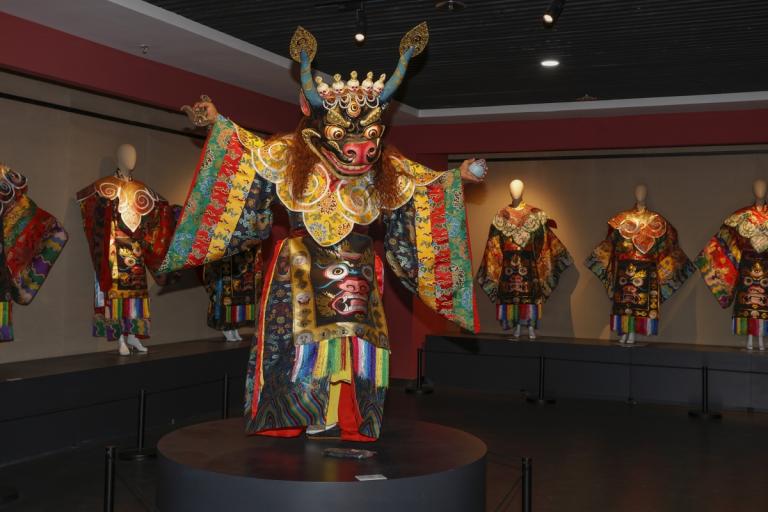
Sheepskin gowns that are well-made and decorated with elegant ornaments are popular in Burang of ngari. The collar, sleeves and lapel bottom are inlaid with otter skin. This might be topped by a silk jacket. This is quite distinctive in the entire Tibetan-occupied regions. However, the finest and the most unique costume in Burang is a womens”Peacock”costume, reflecting the reputation of the Kongquehe in Ngari. The source of the river is like a peacock, which is a symbol of beauty and good fortune and so the women even today seek to imitateit to gain such benefits. The hat that women wear is called”Tingma”, which isa round hat made of dark blue pulu with an opening for the hair. Earrings are made of corals and pearls and are about 15 cm long. The unique hat and the earrings symbolize the head of a peacock.
The most typical costumes in the Kongpo region are “Guxiu”worn by bothmen and women, namely a padded sleeveless robe. A mans”Guxiu”should be laced in the waist, and the lower hem should be above the knees. “Guxiu”fo women are not floor-length.
Robes for women in the north of Tibet are trimmed with large and colorful bands in the back side by side. The colors of the bands generally include black red, green and purple. Mostly, there are five or seven bands. Some are fully decorated on the fur suface. Women in the ngan Tibetan region gen wear foor-length long gowns with a round collar. They wear a colorful waist belt made of silk and cloth. The cloth they wear is like a Manchu cheongsam. They also wear a vest outside, a hand-knitted green and white Hower waist belt with complex geometric patterns. The most prominent part of the costume is the coral Banma that looks like a coral hat. which is distinctive.
Briefly speaking, various kinds of regional, seasonal and folk costumes are coordinated and decided by different natural environments, folk customs roduction methods and lifestyle. Major changes in Tibetan costume culture and the differences among various kinds of graded costumes and professional clothing are predetermined by historical, political, religious and economic development and transformation. Therefore, Tibetan costume culture contains abundant content, complex structures, various levels and distinctive characteristics. Due to he various natural conditions, production method and history, there are various colorful Tibetan costumes differing greatly, and countless examples confirm this Great differences can be detected between counties and even villages in manyregions. More than 200 types of costumes have been found so far, which ranks first among Chinese nationalities.
